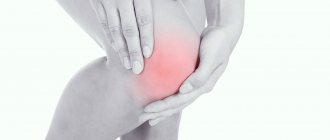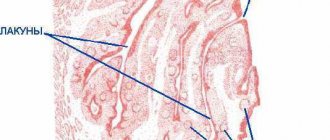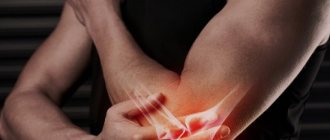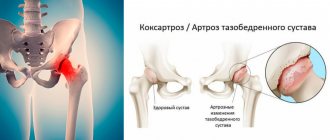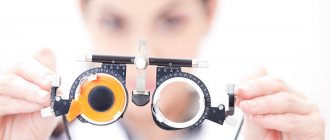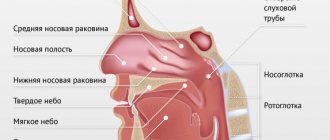Why do my joints hurt?
Joints can hurt for two reasons: arthritis, inflammation of joint tissue, or arthrosis (osteoarthrosis), a degenerative-dystrophic process, that is, destruction of the osteochondral elements of the joint.
The diagnosis must be made by a doctor, but you can navigate the symptoms yourself. Inflammation in arthritis is like a forest fire: everything starts violently, the joint swells and hurts very much even at rest, and when you try to make the slightest movement, the pain intensifies. The skin in this area turns red and feels hot to the touch.
With arthrosis, everything is different: the joints are destroyed slowly and unnoticeably at first. Pain in the joints, at first slight, aching, occurring only with movement, is quite tolerable, but grows over time, becoming constant and strong enough to disturb rest and sleep. The insidiousness of this pain is that it is delayed in relation to the pathological process that occurs in the joint, and occurs only when signs of destruction of the corresponding joint, unfortunately irreversible, become visible on X-ray photographs. This is the growth of spines (marginal osteophytes) along the edge of the articular surfaces of the bones that form the joint, narrowing of the joint space and signs of osteosclerosis - areas of pathological increase in bone density (Fig. 1). If arthrosis affects one joint, say the knee, the biomechanics change and the function of neighboring joints - the hip and ankle - is disrupted. They experience increased and uneven load and, as a result, wear out faster. Thus, arthrosis affects joint after joint, and the pain intensifies and can spread to all new joints.
Figure 1. Arthrosis of the knee joint (gonarthrosis). The cartilage is destroyed, the joint space is narrowed, and there are growths on the bone - osteophytes, which impede movement. Source: CC0 Public Domain
Types of pain
The type and nature of pain depends on the cause that caused it.
Joints ache with the flu and acute respiratory infections against a background of high (up to 40 ⁰C) temperature. This pain goes away on its own as soon as the temperature returns to normal and does not require special treatment.
Arthritis pain:
- spicy,
- painful,
- pulsating,
- shooting,
- occurs at rest and intensifies when performing certain movements,
- sending out to neighboring areas,
- when palpated, it hurts everywhere, over the entire surface of the joint, but especially along the joint space.
Periarthritis is especially unbearable - inflammation of the tissues around the joint (its bursa, tendons and ligaments). How everything happens can be explained using the example of the shoulder joint (Fig. 2). First the joint begins to ache. The pain very quickly becomes excruciating, almost unbearable. It radiates to the shoulder blade and neck area, intensifies (and is often accompanied by a crunching sound) when trying to stretch your arms to the sides at shoulder level or bend them at the elbow and place them behind your back. There are pain points at the end of the collarbone, which rests on the shoulder joint in front, and in the same place at the back. When you press on them with your finger, the pain intensifies. With such acute sensations, the joint requires immobilization - you need to hang your hand on a scarf, try not to move it. This is an important condition for the success of treatment.
Figure 2. Humeroscapular periarthritis. Inflammation of the soft tissue around the joint causes severe pain, often causing disability. The prevalence of the disease is high and amounts to about 4-7% in the population. Photo: CC0 Public Domain
Important! quickly select adequate pain relief and anti-inflammatory therapy after the examination. This will reduce the severity of joint inflammation, reduce pain and improve the quality of life.
With arthrosis, joint pain is different:
- At first, the pain is not severe and intermittent, its character is wave-like - at certain periods it does not exist for weeks or even months. But over time, without treatment, the waves of pain become more severe and come more often, and the intervals between them become shorter.
- Pain at the start: it explodes during the first attempt to take a step, raise an arm, or bend over. Then the joints seem to develop, and the pain goes away.
- Mechanical rhythm - the joint begins to hurt when you load it. First, the pain appears during high loads - lifting heavy objects, running up the stairs, long walking, playing sports. Later, even minor movements echo with pain. But at the same time, unlike the discomfort of arthritis, the pain of arthrosis goes away when you give the joint a rest and provide it with peace. That's why doctors talk about a mechanical rhythm: movement provokes pain, and rest relieves it.
- Night discomfort. There is no pain at rest as such, but lying down is uncomfortable, I always want to change my position, to find a position in which I could forget about the joints and spine, but I can’t. My joints ache, that's all!
- The shackles of the morning: you woke up, there is no pain yet, but it’s as if you were shackled with a chain or tightly swaddled - your joints don’t obey, but little by little the feeling of stiffness goes away, the range of motion in the joint is restored.
- Protective posture. When a joint hurts, you want to take the so-called antalgic - anti-pain pose, in which it becomes easier. This is best seen in the example of the spine: it also consists of joints. When one of them jams, and along with it a nerve root gets caught in a bone vice, acute pain occurs due to radiculitis. Anyone suffering from radiculitis can be diagnosed by anyone who sees how the poor thing is twisted. In fact, with the help of this “distortion”, supported by muscle spasm, the body tries to reduce pain to a minimum.
Arthrosis of the hip and knee
Pain when the hip joint is affected (and it most often affects one side) is localized in the upper part of the thigh and radiates to the knee. He usually starts getting sick in the afternoon, when he has already worked quite a lot. The pain intensifies when walking, and at rest weakens and disappears.
Most often, both knee joints are affected at once. They bend easily, but begin to hurt when bent. Damage to the knees is characterized by the so-called staircase symptom. It becomes more painful to go down than to go up; patients do this by turning sideways. Sometimes a joint becomes jammed in a half-bent position due to a bone outgrowth (osteophyte) or its fragment (such a bone fragment “lost” inside the joint is called an “articular mouse”). Blockage of the joint is accompanied by increased pain when trying to bend or straighten it.
Knee mobility problems are not always due to arthritis. Sometimes joint jamming can be “false”. Some of the most common causes of knee pseudolock include:
- Swelling (excess fluid in the joint capsule can prevent full flexion and extension of the joint),
- Inflammation (inflammation of tissue in the knee, such as in rheumatoid arthritis and gout),
- Incorrect movement of the kneecap in the joint (accompanied by severe pain),
- Irritation of the tissue lining the joint
- Knee injury (any serious injury to the knee, such as a sprain, can cause muscle spasm).
Important! If the joint is jammed and active movements in the joint are impossible, it is necessary to seek medical help as soon as possible from an orthopedic traumatologist - to an emergency room, hospital clinic. Do not hesitate to call an ambulance - this is a good reason to call it, because you won’t get far on one leg and you may not even get to the clinic yourself.
Self-help during attacks of gout, arthritis and synovitis
Take a pain reliever or use an ointment with an analgesic and anti-inflammatory effect. Secure the joint with an elastic bandage, try to move as little as possible, and use support when walking. Avoid eating fatty, spicy, salty and spicy foods.
If you have already been diagnosed with one or another, you can take medications previously prescribed by your doctor to eliminate the cause of the pain attack. For example, during an exacerbation of gout, it is necessary to take medications that help remove excess purines from the body. If you have a high temperature and very severe pain, call an ambulance.
Diagnostics
Based on the nature of the pain and the appearance of the affected joint, even a non-specialist can make a preliminary diagnosis (arthritis or arthrosis). But hurry to your local clinic to confirm your assumptions!
A doctor examines a patient's sore knee. Photo: chayanuphol/freepik.com
Which doctor should I contact?
If you have joint pain, you should make an appointment with your local physician. He performs the functions of a medical dispatcher: he records complaints and clinical symptoms, refers the patient for examination and, based on its results, decides which doctor should be consulted for each specific patient. A variety of specialists are involved in maintaining joint health:
- arthrologist,
- traumatologist-orthopedist,
- rheumatologist,
- vertebrologist (if the spinal joints are affected),
- podiatrist (if we are talking about foot joints),
- surgeon,
- oncologist,
- neurologist (if the joint has already been treated, but the pain remains),
- nutritionist (if your joints hurt due to metabolic disorders, such as gout, or if you are overweight).
What tests and research should I do?
The examination begins with the simplest - a clinical (finger) and biochemical (from a vein) blood test for signs of inflammation, as well as a general urine test. In some joint diseases, the kidneys are involved in the pathological process. Excess uric acid salts in the urine may indicate gout as a cause of joint disease.
Laboratory examination of the synovial fluid located inside the joint helps to detect the inflammatory process and clarify its nature. It is obtained by puncturing the joint capsule - puncture. If necessary, a histological examination of a fragment of the synovial membrane lining the joint cavity from the inside is performed.
A proven diagnostic method is radiography of the joint in two standard projections. It will help visualize narrowing of the joint space, bone spurs, osteoporosis and osteosclerosis (areas of low and high bone density, Fig. 3).
Figure 3. X-ray of the right wrist. Development of osteoporosis (b, c) during treatment with human monoclonal antibodies. Arrows indicate two-layer sclerotic stripes after two courses of the drug. Source: Elsevier Ltd/The Lancet
Currently, magnetic resonance imaging provides comprehensive information about the condition of the joint.
Vascular myalgia and their causes
These are changes that occur in the skeletal muscles of the legs and arms with insufficient blood supply (for example, with atherosclerosis of the vessels of the lower extremities, with Raynaud's syndrome) and are manifested by coldness, a feeling of numbness, pallor or cyanosis of the fingers, and in severe cases, trophic ulcers occur. The cause of Raynaud's syndrome is a violation of the regulation of vascular tone due to cooling or emotional tension, stress.
Patients with suspected vascular pathology are referred for consultation to a cardiologist/rheumatologist and a vascular surgeon.
What joint diseases can cause pain?
There are more than a hundred such diseases. In the elderly, arthrosis is widespread, and in the young, rheumatoid arthritis and injuries (bruises, fractures, ligament damage) are widespread.
“Together with arterial hypertension, which is commonly called hypertension, joint diseases lead the list of the most common reasons for seeking medical help. And the chronic pain that patients experience and because of which they cannot fully live and work is not only a medical, but also an important social problem,” says Doctor of Medical Sciences, Professor of the Department of Rheumatology of the Russian Medical Academy of Continuing Professional Education, senior lecturer educational department of the Research Institute of Rheumatology named after. V.A. Nasonova Natalya Vladimirovna Chichasova. – Of all joint diseases, arthrosis is the most common. 97% of those over 65 years old suffer from this disease. And if we talk about chronic inflammatory diseases of the joints - arthritis, rheumatoid arthritis comes to the fore. It is also not a gift, and not only because of the pain syndrome: already 3-5 years after its onset, this type of arthritis inevitably ends with the patient being assigned a disability group.”
How to get rid of joint pain urgently?
Pills.
Photo: Bloack / Depositphotos Analgesics can quickly overcome pain: you should not tolerate pain under any circumstances if you do not want it to turn from acute to chronic. This metamorphosis can happen very quickly - in 3-4 weeks, so getting rid of joint pain should be an immediate priority. The joint starts to hurt as soon as you put stress on it. Therefore, in case of pain, half an hour before any physical activity, you should take a non-steroidal anti-inflammatory drug (NSAID) with a good analgesic effect.
If joint pain intensifies at night, in addition, before going to bed, the doctor will recommend taking metamizole sodium, as well as drotaverine with nicotinic acid to improve local blood circulation.
Local therapy
NSAIDs have a dangerous side effect - they can cause damage to the gastric mucosa, even leading to the formation of ulcers, so they try to use them topically, as part of various ointments and gels with anti-inflammatory and analgesic properties. They are usually rubbed into the skin over the affected joint twice a day. Special patches with magnetic powder, which are glued to a joint or area of the spine, also relieve pain.
Take care of your feet
If you start listing the factors that affect your health and can cause pain in your legs, the number of them will surprise you. We list only the main ones:
- metabolic disease
- poor nutrition
- overweight
- level of physical activity (both too low and too high)
- lifestyle and nature of work (excessive static load on the legs)
- infectious diseases
- bad habits
- wearing uncomfortable shoes, etc.
From this listing it is clear that it is not always possible to immediately answer the question of why your leg hurts. The combination of various factors causes disruption of the joints, ligaments, muscles or blood vessels and discomfort.


